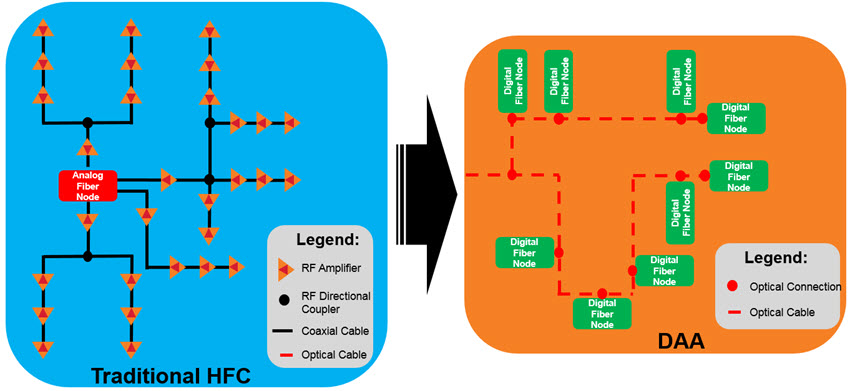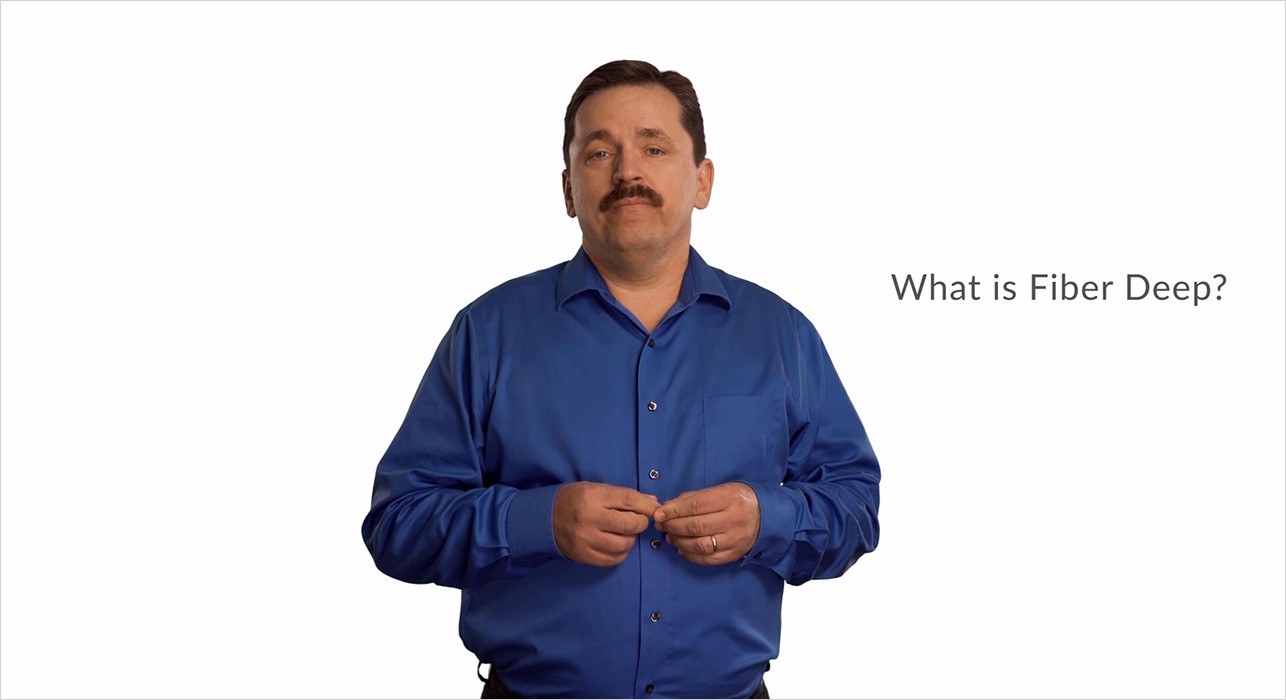Powering Cable’s Future with Distributed Access
Amazon just delivered your new Data Over Cable Service Interface Specification (DOCSIS) 3.1 modem – as you excitedly wonder how fast a Gigabit really is. The answer is that you really don’t care so long as the kids finally stop complaining that YouTube, or their favorite online game, is too slow or doesn’t work, your significant other can socially blog and watch Netflix, and you can finally get online to finish that report while using the new video collaboration tool your office just pushed – all concurrently. Does this situation sound familiar?
With some cable operator networks seeing bandwidth usage doubling every 18 to 24 months, the need to keep pace with faster and better products have pushed the cable industry to extend fiber deeper and closer to end-users to meet voracious bandwidth demand.
Legacy Hybrid Fiber Coax (HFC) networks, recently heralded as a blessing, are now stressed to keep up with demand; most head-ends and hubs have become saturated with racks and racks of Converged Cable Access Platform (CCAP) equipment. Analog infrastructure is expensive to operate, maintain, and simply won’t scale to future demands.
While HFC has been around for 20+ years, most traditional cable networks of today are based on Centralized Access Architecture (CAA), where the access network consists of a combination of analog optical and coaxial Radio Frequency (RF) technologies, and the core network (head-ends and hubs) consist of Cable Modem Termination Equipment (CMTS) and Edge Quadrature Amplitude Modulation (EQAM) equipment. EQAM helps deliver broadcast and narrowcast video, and CMTS provides broadband services.

In response to the afore mentioned market forces, cable operators are strategically extending fiber to digital fiber nodes, in a Distributed Access Architecture (DAA). This involves removing coaxial RF active devices like amplifiers and power inserters, and adding more digital fiber nodes. By removing analog channels and older DOCSIS 3.0 technology, operators can reclaim spectrum to use with more efficient DOCSIS 3.1 technology, which also enables DOCSIS FDX. DOCSIS Full Duplex (FDX) is the next generation of cable modem technology, which promises up to 10Gbps full-duplex. The world of applications and services is evolving, and with that the need to migrate asymmetrical networks to symmetrical ones for things like real-time gaming, augmented and virtual reality, and the Internet of Things (IoT). Most cable operators have plans for gigabit cable modem symmetrical services for both residential and commercial users. That doesn’t mean asymmetrical services are going anywhere soon, just more on the pile.
You may have heard; most cable operators and vendors are testing and field trialing DAA options.
Most cable operators are planning for DAA as it has many benefits:
- Reduced space and power in the headend or hub,
- Better performance, having better Carrier-to-Noise-Ratio (CNR) enables higher modulation techniques resulting in higher capacity and speed,
- Reduced CAPEX and OPEX, by using packet-based digital optics, to provide better network visibility and integrated tools, and
- Future path to virtualization adding flexibility and “future-proofing” the investment.
While there are several DAA approaches, here are the two that dominate the conversation today:
- R-MAC/PHY (Remote-PHY/MAC) - moves the entire CMTS out of the headend or hub into a digital fiber node
- R-PHY (Remote-PHY) - only moves the CMTS PHY function to the digital fiber node. The MAC layer remains back in the headend or hub or pushed to a data center as a virtual function
DAA is really a gateway to a virtualized architecture, creating a more packet based and open network, helping to future-proof the network.
Moving MAC and PHY functions, using digital fiber optics and digital fiber nodes, and streamlining head-ends and hubs will vastly improve the network and service performance. You see it’s all about Quality of Experience (QoE), and if your customers have a positive experience so goes their loyalty.
As cable operators deploy DAA, they will require a next generation fiber distribution network. Ciena’s modular packet-optical architecture, award-winning coherent optical processor technologies, and Liquid Spectrum can be used to provide the foundation of their optical network. Blue Planet MCP is based on an open and extensible architecture, to provide secure and reliable end-to-end lifecycle management and operations to the increasingly virtualized network functions, Blue Planet Analytics can unlock smart data to enable intelligent automation and operations of the dynamic and virtualized world.
So, get ready, as the future is here!
Ask us how Ciena helps build the next generation fiber distribution network.





